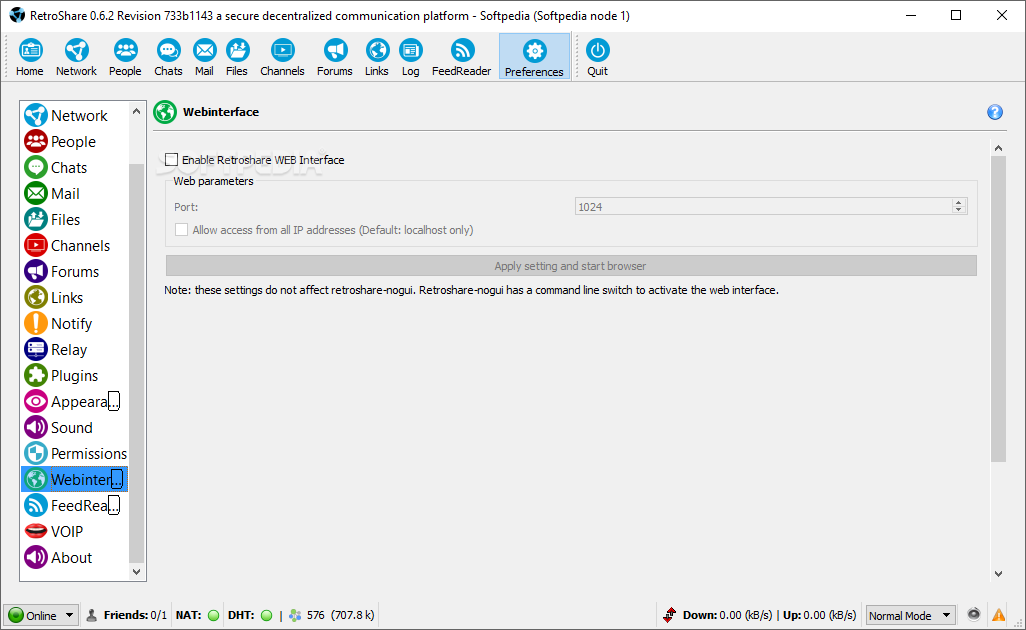

- Retroshare proxy wait for mac os#
- Retroshare proxy wait mac os#
- Retroshare proxy wait install#
- Retroshare proxy wait zip#
- Retroshare proxy wait download#
Documentation isn’t greatĭocumentation, and namely Mac OS build instructions, is scattered across several places. I’ve never used RetroShare before, and here’s what I can tell after using it for a week. Or maybe I would have just given up halfway. Getting ( and building) all the dependencies without it would take dramatically more time. I must say, Homebrew is an absolute life savior. plugins / RetroChess /lib /libRetroChess. plugins / FeedReader /lib /libFeedReader. So here’s the entire chain of commands for deployment: Though RetroShare plugins do need to be copied manually.Ĭonveniently enough, macdeployqt can also make a DMG. But still - it does the job, so it’s easier to copy all the dependencies with macdeployqt than to find and copy them manually. Actually, I would not recommend it, as it seem to bundle some redundant things as well, for example Virtual Keyboard, which I don’t think is used in RetroShare. In order to find and copy all the required libraries and frameworks, I would recommend to use macdeployqt.
Retroshare proxy wait zip#
It can just as well be a ZIP archive, but DMG seem to be more common for distributing applications on Mac OS. If you’d like to distribute your build to other people, you’ll need to bundle required libraries and frameworks and also make a DMG. $ tree -L 2 /path/to/retroshare/src/build/retroshare-gui/src/RetroShare.app/Contents/Resources/ But also here’s what I get when I try to build the RetroShare project from Qt Creator: Well, first of all, building from CLI is just faster and actually more convenient.

You might ask, why building with bare qmake from CLI, why not building from Qt Creator? Having done that, when you launch RetroShare next time, it should discover the plugins: What about building from Qt Creator These files needs to be either bundled into RetroShare.app/Contents/Resources/ or copied to /Users/YOURNAME/.retroshare/extensions6/ ( or whichever path is set in Preferences). Having built such a configuration, aside from RetroShare.app you will also get plugins built in /path/to/retroshare/src/build/plugins/**/lib/*.dylib. QMAKE_LIBDIR += "/usr/local/opt/ffmpeg/lib" \ INCLUDEPATH += "/usr/local/opt/libxslt/include" QMAKE_LIBDIR += "/usr/local/opt/libxslt/lib" \ INCLUDEPATH += "/usr/local/opt/speexdsp/include" QMAKE_LIBDIR += "/usr/local/opt/speexdsp/lib/" \ INCLUDEPATH += "/usr/local/opt/speex/include" QMAKE_LIBDIR += "/usr/local/opt/speex/lib/" \ INCLUDEPATH += "/usr/local/opt/opencv/include/opencv4" QMAKE_LIBDIR += "/usr/local/opt/opencv/lib" \

QMAKE_LIBDIR += "/usr/local/opt/miniupnpc/lib" \ QMAKE_LIBDIR += "/usr/local/opt/sqlcipher/lib" \ INCLUDEPATH += "/usr/local/opt/openssl/include" QMAKE_LIBDIR += "/usr/local/opt/openssl/lib" \
Retroshare proxy wait install#
There is some documentation on the matter ( more about that later), from which I got to know that I need to install the following dependencies: And I would say, 3rd-party dependencies is the main difficulty of building RetroShare from sources. I’ll describe the process for both variants: with and without plugins.īuilding without plugins is easier, because it has less 3rd-party dependencies. The base application is extendable with plugins, and there is a qmake configuration option for building those too. InstalledDir: /Applications/Xcode.app/Contents/Developer/Toolchains/XcodeDefault.xctoolchain/usr/bin If anything, I built mine from sources, but it will most likely just as well work if you’ll get it using official installer.Ĭonfigured with: -prefix =/Applications/Xcode.app/Contents/Developer/usr -with-gxx-include-dir =/Library/Developer/CommandLineTools/SDKs/MacOSX.sdk/usr/include/c++/4.2.1Īpple clang version 12.0.0 (clang-1200.0.32.29 ) Target: x86_64-apple-darwin19.6.0 So as the very minimum, aside from cloning the repository, you need to have Qt installed in your system. RetroShare is based on Qt and currently it uses qmake. Let’s take a cheeky look into the building process then.
Retroshare proxy wait download#
It also seemed like a good opportunity to finally try RetroShare, as it has been available for more than 15 years, and I’ve heard many good things about it.Īt the moment Mac OS section on download page looks like this: I found this peculiar, so I decided to try to build it from sources myself.
Retroshare proxy wait for mac os#
But while download page offers quite a variety of pre-built packages for different operating systems, there is no 0.6.6 build for Mac OS ( only 0.6.5 is available). A couple of weeks ago RetroShare has released version 0.6.6.


 0 kommentar(er)
0 kommentar(er)
